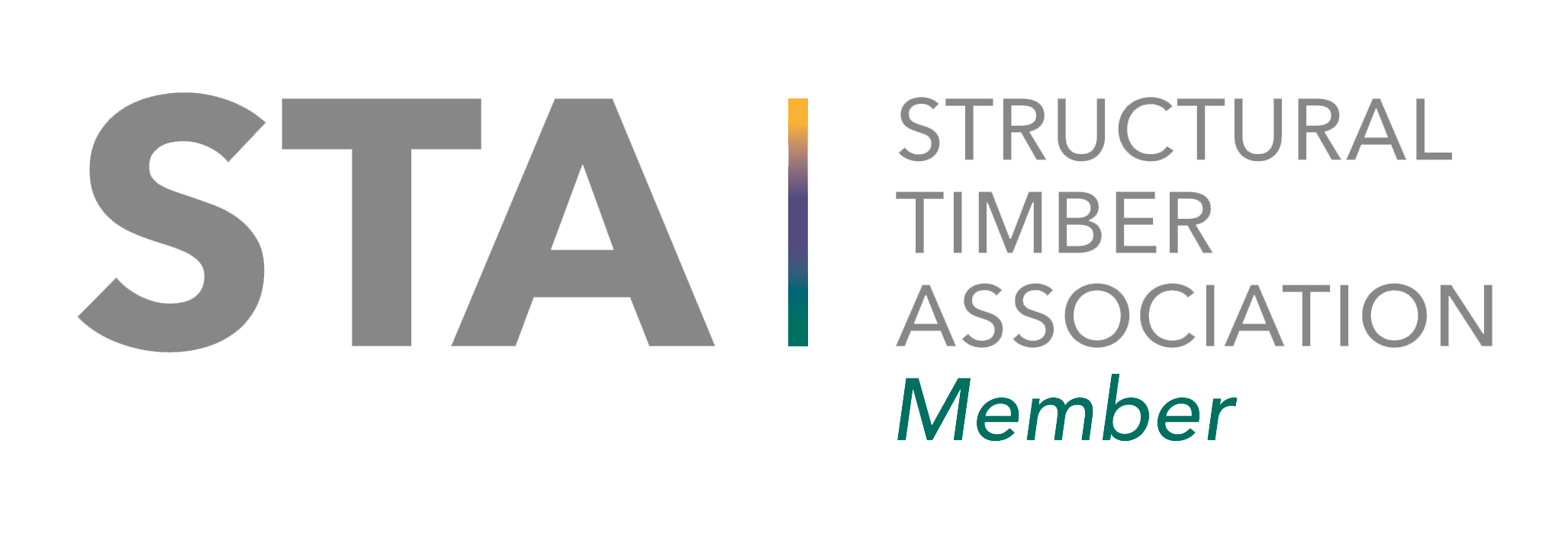Following the discussions at last year's COP26, and the goal to achieve net-zero in Scotland by 2045, building homes that are more environmentally friendly has become a priority for many people.
One of the big talking points at COP26 was around timber and how it can be further utilised within the construction industry to make our built environment less damaging to the planet.
As a self-builder, making the decision to use timber, as opposed to a masonry or steel build, is an excellent starting point for making your home more eco friendly. There are many environmental benefits of using this material as a construction method.
In this blog post, our business development manager, Debbi Keatings, discusses how a timber frame property can support the move towards net-zero…
1. Wood products reduce waste and carbon emissions
“Choosing timber as a structural material is a great sustainable option because it is regenerative. All of our timber is sourced from well managed forests where for every tree that is felled at least twice as many are planted. By supporting sustainable forestry and using the whole tree, we keep the lifecycle of timber going forever.
“We’re proud to fully optimise the whole process at our factory to minimise waste. Any off-cuts from the structural timber are reused or recycled and wood waste is used to heat our factory and offices.
“As a tree grows, it captures and stores carbon from the air, which is still stored even after the tree has been cut down and used in construction. This means there’s limited opportunity for carbon to escape the timber frame and be released into the environment. Not only that, studies have consistently shown that timber absorbs more carbon than the amount that is emitted during production, making timber a carbon reducer as well as a carbon capture material.
“For the eco-friendly self-builder, it’s also important to note that timber has the lowest amount of embodied carbon compared to any other mainstream building material, as it’s much less energy-intensive to manufacture than man-made products.
“This is a huge area of discussion at the moment as we attempt to tackle climate change. At COP26, timber was a fundamental talking point as a solution to decarbonise our built environment and reduce carbon emissions. Timber is going to play a huge role in the future of homebuilding.”
2. Timber frame ensures airtightness
“Something to consider when building a home is making sure it’s airtight, which is particularly important if you wish to create an energy efficient home.
“Air leakage can cause up to 50% of all heat loss in a well-insulated home, so making sure your home is free from draughts and cold areas is vital to make a home more energy efficient and environmentally friendly.
“Timber frame has proven to be an airtight solution when well insulated and joints are sealed correctly on site. Opting for a closed panel timber frame system can help ensure there are minimal gaps, as insulation is fitted in a factory controlled environment.”
3. Timber offers superior thermal performance and insulation
“Timber frame is a far superior solution to masonry when it comes to thermal performance. Not only is timber frame available in various widths - giving the ability to add more insulation - it’s also much better at retaining heat than alternative methods.
“According to World of Wood, timber is 10 times more thermally efficient than concrete and 400 times more than steel. While this is great for making a home more eco friendly, as timber reduces emissions that would be created by heat that’s lost from the building, it will also make your home far more energy efficient and allow you to save money on your energy bills.
“In terms of the insulation material itself, there are lots of options that would pair well with a timber frame home, offering an environmentally friendly solution while also being very effective. For example, instead of using PIR (polyisocyanurate - a type of rigid board insulation), or a fibreglass solution, try more sustainable forms of insulation such as recycled newspaper, hemp or timber fibre.
“As well as this, the natural thermal responsiveness of timber allows a building to heat quickly in the winter while staying cooler in the summer.”
4. A timber frame home pairs well with renewable heating sources
“To make your home more eco friendly, we would recommend combining your timber frame kit with a renewable heating source. Incorporating solar or PV panels ticks the box with local authorities, as does using an air or ground source heat pump as opposed to using gas and oil.
“This is particularly important for self builders at the moment as regulations are moving further away from gas and oil, and more towards renewables, which is set to be launched as a government initiative in 2025, where gas boilers will be replaced by renewable heating systems in all new-build homes. So people really need to start considering it now and get ahead of the curve if they’re building a home.”
5. Timber provides thermally efficient window frames
“When it comes to choosing your windows, making sure the frames are primarily made from timber is another important step to creating a home that is eco friendly.
"Having a really good building fabric is crucial for energy efficiency, and includes windows and doors, as well as the structural material and insulation itself.
“Windows are primarily made from glass which does not perform as well as the insulated timber frame part of your home, making them less thermally efficient. When you look at the whole envelope of the building you want to try and maximise the thermal performance overall. However, we need windows in our homes - plus they have the benefit of letting natural light in, instead of powered lighting. Large windows look fantastic in newly built properties, but opting for smaller windows could help with the energy performance of your home.
“A tip when using smaller windows is to place mirrors around your home to bounce as much light around as possible. If you really want to incorporate larger windows, position them on the south face of your home to maximise solar gain and close your curtains in the evening to prevent heat escaping as quickly.
“Choosing a timber product when it comes to the windows will also help to improve the thermal performance of your home. Windows that are manufactured using mainly timber in the frame will mean there is significantly less CO2 emitted in the production process, compared to windows with frames constructed primarily in aluminium or uPVC.”
6. Wood can be utilised in the internal finishes
“Once your timber frame home is built, you can go a step further and make it even more eco friendly by incorporating wood in the internal finishes. Instead of using man-made materials such as metals and plastics, using wood as a material for the stairs, floors, internal doors and skirting boards can make a big difference.
“You could also utilise wood in the furniture and interior design of your home as part of the finishing touches. Centering your home around timber and the beauty of natural wood not only contributes to making your home that extra bit more eco friendly, it’s also more cost-effective and creates a lovely, natural look.
“Additionally, bringing the outside in has long been linked to improving our mental wellbeing, which is yet another benefit of using timber in your home.”
How Kirkwood Timber Frame can help
“Here at Kirkwood Timber Frame, we provide a wide range of products, allowing for the entire structure, windows and doors, insulation, plasterboard, chipboard, internal door sets, skirting, facings and staircases. This is a large part of what you will need for your build, which can make things a bit easier for you.
“Our services include architectural drawings, SAP assessment, planning and warrant applications, timber frame engineering and timber frame design. We also manufacture timber frames, door sets and staircases at our facilities in Sauchen, Aberdeenshire.
“We are here to help you, so why not arrange to meet with a member of our team at one of our show homes for some help and advice? You will be able to see the products Kirkwood Timber Frame can provide and make choices on a variety of items.”
Further reading and resources:









